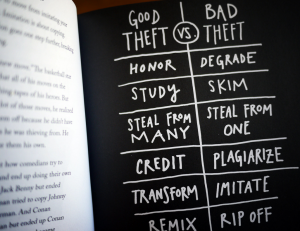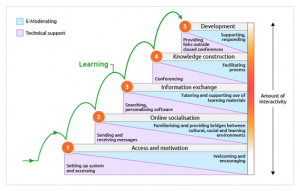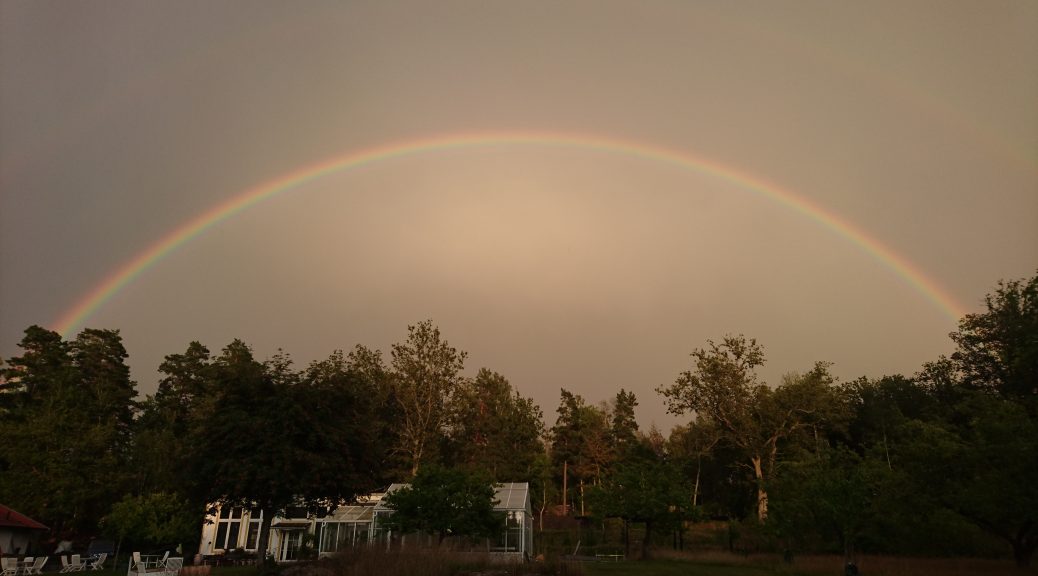During the two weeks of topic 2: Open Learning – Sharing and Openness, my group and I have had interesting discussions about the possibilities and dangers with open resources. Most of us believe that openness is very positive, as you can take part of many kinds of different open resources; education, articles, books, illustrations, codes etc. It is a possibility for you not having to create things from scratch every time. Sometimes you can use the source they way it is, sometimes you use some parts and sometimes you just need it for your own inspiration.
However, there are obstacles to overcome when you want to share something in return. For example, your own attitude, which includes your fears of how people will react on what you share or that they will interpret it in a different manner than you yourself had thought. There is also the fear that someone will use your material in a way that you did not intended. Another obstacle can be the culture of your workplace; you might not be allowed to share because of copyright issues or other, not always outspoken things.
“Steal like an artist”
In the line of business where I used to work, the graphical design industry, you often looked at things others had created and used it as inspiration. Taking bits and pieces and putting them together into something that was your own, seldom sharing where you found it…

A few years later, when teaching graphical design, I found the book “Steal like an artist” by Austin Kleon. It was a book that talked about just that phenomena. To help my students get going with their design projects, I started to read parts of the book to my students. They found it really interesting and we had good discussions after the read. Austin Kleon encourages to honor, study and credit, when “stealing” other peoples materials. The Creative Commons (CC) is a way of saying just that, and a very good way of sharing materials. As a user of cc-material, you know who to credit and how.
In the field of education, we are many that teach the same types of courses, and it is very positive for our students that they can be inspired by other people than yourself (even if you should be the best teacher ever 😉 ). We can also join open educational courses ourselves, to get better in what we teach and do.
With applying “open” more, we can “borrow” from each other or share links to what others have done. When finding materials that doesn’t properly show if you can use it, it’s a good thing to send an e-mail to the creator and ask. They are most oftenly pleased to share.
Helping others reach their dreams
All of us benefit from the OERs and MOOCs and other open materials, but some groups even more. For example people that couldn’t fullfill their schooling by different reasons . People that, when growing older, want to change their life situation, but are excluded because of this. Making education open, gives them a way to reach their dreams, to reach their treasure at the end of the rainbow…
I believe that we all benefit from being more open, sharing what we know, to inspire others. Me, I just have to take the next step, believing that what I know can be inspiration to others.
Resources
“Good theft vs bad theft”, Austin Kleon
Steal Like An Artist
Rainbow photo, my own


 I was happy to read about the
I was happy to read about the 



 When listening to David White and he asked us to draw the image on residents and visitors I drew a picture of someone out walking a dog. It isn’t true that I in my free time don’t use digital tools at all. But it’s something I’m working towards; Being present. Watching. Listening. Especially important when being with family and friends. Things are happening all around you all the time, and if you’re busy listening to pod casts or music or checking the facebook status you’ll miss some of the important interaction there.
When listening to David White and he asked us to draw the image on residents and visitors I drew a picture of someone out walking a dog. It isn’t true that I in my free time don’t use digital tools at all. But it’s something I’m working towards; Being present. Watching. Listening. Especially important when being with family and friends. Things are happening all around you all the time, and if you’re busy listening to pod casts or music or checking the facebook status you’ll miss some of the important interaction there.